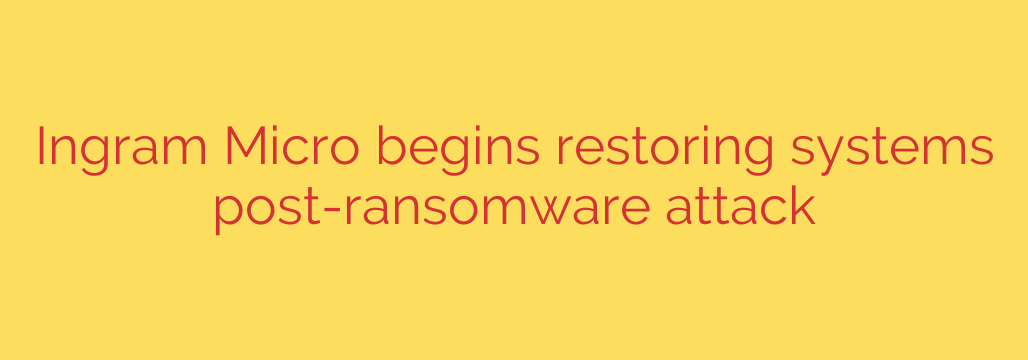
Major Tech Distributor Faces Ransomware Challenge: The Path to Recovery
The increasing frequency and sophistication of cyberattacks continue to pose significant threats to businesses of all sizes. Recently, a major global technology distributor has been grappling with the fallout from a ransomware attack that impacted some of its systems.
Ransomware incidents like this can lead to significant disruptions, potentially affecting operations, internal processes, and even supply chain activities involving partners and customers. In the wake of such an attack, the immediate focus shifts to containment, investigation, and ultimately, recovery.
The affected company has been actively working to manage the situation. Key steps typically involve isolating impacted systems to prevent further spread, engaging leading cybersecurity experts to investigate the scope and nature of the attack, and diligently working towards bringing systems back online.
A crucial development in managing this incident is that the company has begun the complex process of restoring affected systems. This marks a significant step on the path towards operational recovery. Restoring systems after a sophisticated cyberattack is a meticulous process, often involving validated backups, rigorous security checks, and a phased approach to ensure stability and security. The priority remains on prioritizing recovery while maintaining the integrity and security of their environment.
Incidents like this underscore the persistent and evolving nature of cyber threats targeting businesses. They highlight the critical importance of robust cybersecurity defenses and comprehensive incident response plans.
For organizations looking to enhance their resilience against ransomware and similar attacks, several key practices are essential:
- Maintain regular, verified offsite backups: This is arguably the most critical defense, allowing recovery without succumbing to ransom demands.
- Implement strong access controls and multi-factor authentication (MFA): Limiting unauthorized access and lateral movement within networks is vital.
- Provide ongoing cybersecurity training for employees: Human error remains a leading cause of breaches, making employee awareness crucial.
- Develop and regularly test an incident response plan: Knowing exactly what steps to take before an attack occurs can significantly mitigate damage and accelerate recovery.
- Keep all software and systems patched and updated: Addressing known vulnerabilities reduces potential entry points for attackers.
While challenges remain, the focus on system restoration is a positive indicator of progress. Navigating the aftermath of a major cyberattack requires resilience, expertise, and a clear recovery strategy, emphasizing the ongoing need for vigilance in the face of today’s cyber threat landscape.
Source: https://www.bleepingcomputer.com/news/security/ingram-micro-starts-restoring-systems-after-ransomware-attack/








